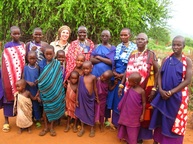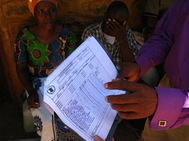
 Thanks to an initiative led by several international volunteers and headed by our friend from America, Elizabeth Mitchel, KIHO will implement the construction of at least three biogas plants in Mkume sub-village in the Pare mountains. Eventually, ten biogas plants shall be constructed in an effort that local communities benefit from this rather simple technology. In fact, the small-holder farmers just need to use the cow-dung manure, mix it with water, and then the locally-made biogas plant is producing biogas for them.
0 Comments
 With a three day visit in Chome last week, the first phase of assessing the potential of eco-cultural tourism has been concluded for KIHO. We learned many things during our visits to a traditional healer, a Maasai boma, Gonja village, Tona Lodge in Mbaga, the tourist offices in Lushoto in the Usambara mountains as well as Chome with Shengena Forest. It was very interesting to see the successes but also the challenges that other places that have tourism established to some degree face with their visitors. We hope to start soon with this project that will help the local communities to generate additional income.  On Monday, KIHO visited some rural women in Kirinjiko, a sub-village of Chajo. It is a 15 minutes drive from Same town along the tarmac road to Dar es Salaam and the sub-village consists of some 70 households. In earlier times, the women sold charcoal to people-passing by in their vehicles on this busy road. However, all the big trees in the area have been cut down in the meantime, bringing the charcoal-making business to a halt. Today, the women rely on selling firewood. However, around their area even the smaller trees have been cut down.  One of the main challenges that we have encountered working in the field with local communities is the lack of statistics. In Tanzania there isn’t a culture of keeping records of what has been done in the past and what is currently happening. The failure to do so has a negative impact on planning for the future because adequate statistics are just not available. Whether it is the individual farmer, local community initiatives or even the official village or sub-village representatives: they are all united by having little or no statistics available to very important and basic things of their surroundings. This gap is not a minor challenge, it is in fact one of the main challenges that rural community development is facing! |
News UpdatesOn this page you can find news updates about KIHO. Please feel free to comment. Archives
November 2014
Categories
All
|
 RSS Feed
RSS Feed
